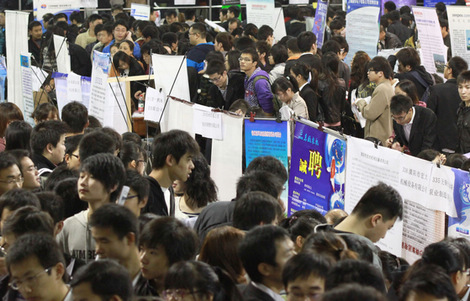Mars mission enters final countdown
Updated: 2011-11-09 07:23
By Xin Dingding (China Daily)
|
|||||||||||
BEIJING - Yinghuo-1, China's first interplanetary spacecraft, is set to hitch a ride with Russia's Phobos-Grunt Mars mission in the early hours on Wednesday, after a two-year delay.
A Zenit-2SB rocket will carry Yinghuo-1 and Phobos-Grunt into space from the Baikonur Cosmodrome launch site in Kazakhstan.
It is China and Russia's first joint Mars operation and also marks China's first voyage to the Red Planet, China Great Wall Industry Corp said in a news release on Tuesday.
Yinghuo-1 will work in orbit with Phobos-Grunt for more than 12 months in collecting data on the Martian atmosphere.
Both spacecraft will travel for more than 10 months before entering Martian orbit. During the trip, Yinghuo-1's power supply, communications and temperature gauge will be controlled from the Russian craft, scientists said.
Both craft will orbit the planet three times before decoupling. The 106-kg Yinghuo-1 will circle Mars in an elliptical orbit, while Phobos-Grunt will actually land on Phobos, one of the two Martian moons, and bring back soil samples to Earth.
"The collaboration with Russia will enhance China's ability in deep space exploration, improve spacecraft design and development, and promote planetary exploration," said an unnamed official with the corp, a subsidiary of the China Aerospace Science & Technology Corp. Russia's Lavochkin Research and Production Association signed a cooperation contract, based on an agreement between the Chinese and Russian governments, with China Great Wall Industry Corp in 2007.
Yinghuo-1, with a two-year lifespan, also has its own scientific goals.
These include analyzing the planet's magnetic environment and ionosphere (upper atmosphere), taking images of topographical features and studying gravity fields on the Martian equator.
Pang Zhihao, deputy editor-in-chief of the monthly publication, Space International, said China's focus on the planet's upper atmosphere is significant.
Twenty detectors have explored parts of Mars, but most of them have looked for traces of life or water or places suitable for setting up colonies, he said.
But studying the upper atmosphere is also vital if humans are to live on the planet, he said.
The mission was set for October 2009, but later postponed to this year to enhance the reliability of the project.
Only the United States, the former Soviet Union and the European Union have succeeded in landing probes on Mars. Five are in operation, four belong to the US and one belongs to the EU.
At least 21 probes sent to the planet have failed. The Shanghai Academy of Spaceflight Technology under the CASC, which designed Yinghuo-1 in 23 months, said that the satellite posed a major technological challenge as the furthest space destination for China before had been the moon. The moon's average distance from Earth is about 384,000 km. The distance between Mars and Earth, depending on orbits, ranges from approximately 55 million km to about 350 million km.
Yinghuo-1 will have to endure periods in the freezing dark side of the planet.
It underwent simulated tests that matched the Martian temperature, - 260 C.
Because of the distances involved, the satellite cannot rely on ground control to adjust position. It will rely on its own onboard computer, scientists said.
Hot Topics
HIV/AIDS, Egypt protest, Thanksgiving, climate change, global economic recovery, home prices, high-speed railways, school bus safety, Libya situation, Weekly photos
Editor's Picks

|

|

|

|

|

|







